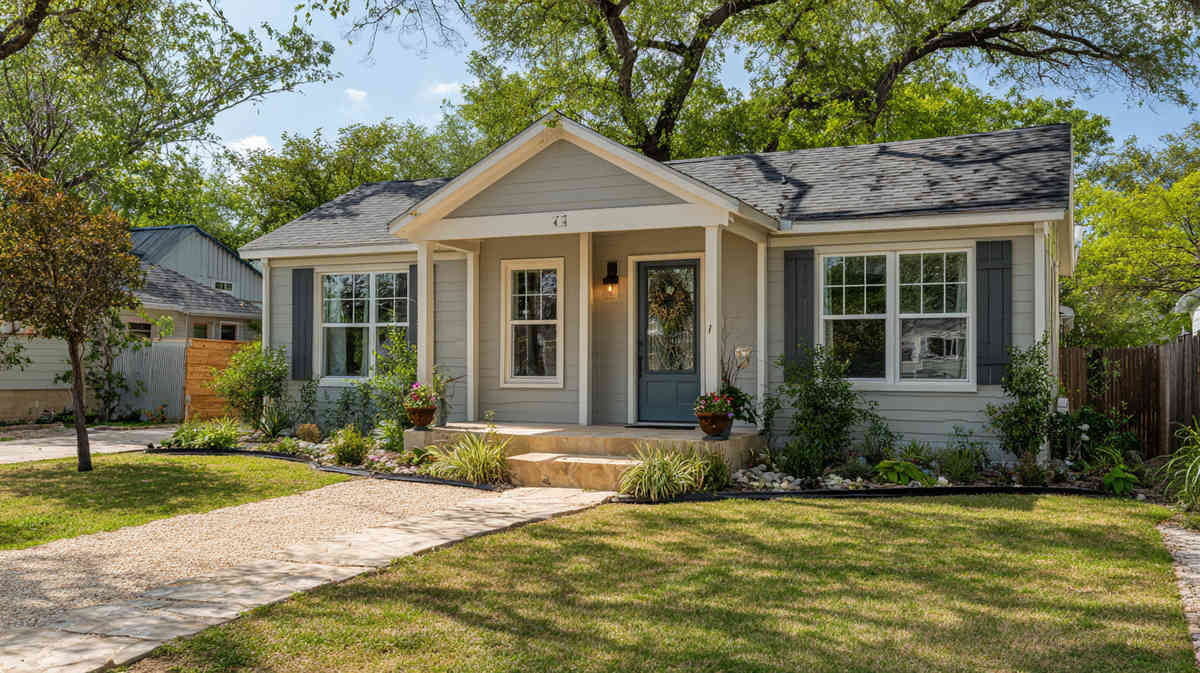You bought. You painted the front door. You may have argued with a leaky faucet at 2:00 a.m. more than once. Now that tiny voice keeps asking, “Is it time to sell?”
Grab something to sip on and let’s unpack that question in a way that actually makes sense for Valley View, Texas. This is the nitty-gritty the national blogs keep skimming over.
So, How Long Do Most Folks Stay Put?
Real-estate pros toss around a five-year rule like it’s carved in stone. The idea is simple: stick around long enough for two things to happen—
- Interest early in the loan fades, and more of your monthly check attacks the principal.
- Home prices have a chance to climb, padding your equity.
Sounds neat. Still, Valley View never asked the rest of the country for permission to be different.
- In some years local prices jump four to six percent without warning.
- Other times they nap under two percent.
Hang on to the house less than three years and closing costs alone can wipe out gains. Stay longer than eight years and you’re usually sitting on heftier profit, but you may miss the peak of a hot market cycle.
There’s no magic dart board, however five to seven years tends to be the sweet spot where mortgage math, equity growth, and life plans line up for many residents here.
The Mortgage Curve No One Talks About
Take a typical 30-year fixed loan. First 60 payments? Interest hogs the spotlight. Knock the loan down for a full five years and roughly 15–18 % of your payment has finally started eating principal. Sell sooner and you hand a chunk of appreciation back to the lender.
Emotions Do Weird Things to Logic
If you’re restless because a bigger kitchen would change your life, that’s real. On the flip side, selling because “everyone else is cashing out” rarely works out. Do the math, then honor the gut feeling. Both matter.
What’s Up With the Valley View Market Right Now?
Market chatter from Dallas or Austin only helps so much. Valley View moves to its own beat.
Appreciation Pace in the Last Five Years
Texas A&M’s Real Estate Center puts Valley View’s average annual appreciation near 4.3 %. That’s a shade faster than statewide numbers. Translation: a $350,000 home bought in 2019 hovers close to $414,000 today, give or take condition and upgrades.
Supply, Demand, and Those Shiny New Rooflines on FM 922
New-build permits climbed almost 18 % in the past two years. Fresh construction can:
- Pull buyers into the area, raising overall demand.
- Give shoppers more choices, softening price spikes on resale homes.
If builders flood the market, you may need to own a hair longer to capture the equity you want. When inventory stays tight, even a three-year owner can walk away smiling.
Interest Rates Put Time on a Leash
A one-point rise in mortgage rates chops thousands off a typical buyer’s purchasing power. Higher rates often push owners to stay put until conditions settle. For Valley View, every quarter-point bump tends to shave about one percent off year-over-year appreciation. Keep an eye on the Fed; it influences your ideal timeline more than the paint color in your living room.
Squeezing Every Last Dollar of Equity
You’ve held the place long enough. Now it’s about maximizing what you keep.
The Silent Wallet-Leak: Transaction Costs
Selling comes with:
- Realtor commissions (around five to six percent).
- Title fees, surveys, and lender demands if the buyer has a loan.
- Property-tax prorations.
- Repairs requested after inspection.
On a $400,000 sale, eight to ten percent can disappear before you see a dime. That’s why the hold period matters; you need appreciation to outrun these fees.
Smart Upgrades That Actually Pay Back in Valley View
Skip the magazine-cover remodels that cost $60k. Valley View buyers notice:
- Fresh exterior paint.
- Energy-efficient windows.
- A primary-bath refresh (think fixtures and lighting, not a full gut).
- A tidy, drought-tolerant lawn—water bills matter here.
Spend $8k-$12k on those and you might see double the return. Drop $50k on a gourmet kitchen and you’ll be lucky to recover 60 %.
Timing the Sale for Maximum Eyeballs
Late March through early June pulls the largest crowd of house hunters in Cooke County. List during that window and shorter ownership periods start looking more attractive because demand props up price. Miss the season and you could sit longer or negotiate harder, which nudges the break-even point out another year.
Thinking Bigger—The Long Game
Maybe selling now looks great on paper, but let’s weigh the ripple effects of hanging on.
Capital-Gains Tax Perks
Own and occupy the house at least two of the past five years and you can shield up to $250k of profit from federal taxes if you file solo, $500k if you file jointly. Bail at month 18 and the IRS wants a slice of your pie. That alone keeps many owners parked past the two-year mark.
Keep It or Rent It?
Valley View’s median rent sits near $2,100 a month. Convert your house to a rental and cash flow might cover the mortgage plus maintenance with change left over. Things to consider:
- Property-management fees run eight to ten percent of collected rent.
- Wear and tear rises fast when you aren’t living there.
- Loan rules change; your lender may tweak rates once the place stops being your primary residence.
If renting nets less than $300 a month after every expense, selling often wins.
Lifestyle Anchors
Maybe you’re craving a shorter commute to Denton. Maybe the front yard has turned into a weekly chore you’re done with. Lifestyle goals often trump spreadsheets. Tie those goals to a timeline. If the new plan won’t wait three more years, fine. Just walk in knowing the financial trade-offs.
Ready to Talk Timing?
Here’s a quick gut-check list:
- Been in the house at least two years? Congrats, the tax man calms down.
- Equity covers eight to ten percent of the expected sale price? You’re clear of the fee trap.
- The local market still shows positive appreciation? Momentum is your friend.
- Life changes screaming at you daily? Peace of mind is worth real money.
If you checked three of four, you’re likely in a strong spot to sell. Miss two or more and another year or two of ownership could tilt the outcome in your favor.
Thinking through the next step is easier with real numbers. Reach out, and we’ll run a free equity snapshot based on today’s Valley View data—no pressure, just clarity. The right time to sell isn’t universal. It’s the moment when the math, the market, and your life all nod in the same direction.
When they do, you’ll know. And you’ll be ready.



